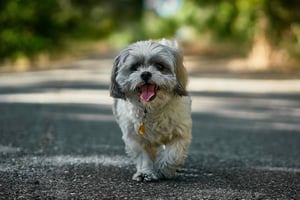Potty training a new puppy can be a daunting task. It can take patience, dedication, and time to...
How to Potty Train a Puppy in the Most Effective Way
Potty training a puppy is not an easy task, but it is essential for any responsible pet owner. This article will provide a comprehensive guide on how to potty train a puppy, including tips on techniques, supplies, and troubleshooting. With the right approach and a bit of patience, potty training a puppy can be a relatively quick and stress-free process.
Choosing the Right Potty Training Technique
The first step in potty training a puppy is to choose the right technique. There are several popular methods, such as crate training, bell training, and paper training. Each technique has its own advantages and disadvantages, so it's important to do some research and choose the one that best suits your lifestyle and your puppy's personality.
Crate Training: Crate training is a popular potty training technique that involves using a crate or kennel to keep your puppy confined when you're not able to supervise them. This technique encourages your puppy to hold their bladder and wait until they are let outside to relieve themselves.
Bell Training: Bell training is a technique that involves teaching your puppy to ring a bell when they need to go outside. This technique is great for puppies who are already familiar with the sound of a bell. It's also a great way to teach your puppy to communicate their needs.
Paper Training: Paper training is a technique that involves teaching your puppy to use a designated indoor potty area. This technique is great for puppies who are not yet ready for outdoor potty training. It's also a great way to teach your puppy to use an indoor potty area if you live in an apartment.
Gathering the Necessary Supplies
Once you have chosen the right potty training technique, it's time to gather the necessary supplies. Here is a list of the most important supplies you will need:
- Crate: If you are using the crate training technique, you will need a crate or kennel. Make sure the crate is the right size for your puppy and that it is comfortable and secure.
- Bell: If you are using the bell training technique, you will need a bell. Make sure the bell is loud enough for your puppy to hear and that it is easy for them to reach.
- Paper: If you are using the paper training technique, you will need paper or puppy pads. Make sure the paper or pads are large enough for your puppy to use and that they are easy to clean up.
- Treats: You will need treats to reward your puppy when they successfully use the potty. Make sure the treats are small enough for your puppy to eat and that they are healthy.
Potty Training Your Puppy
Now that you have chosen the right technique and gathered the necessary supplies, it's time to start potty training your puppy. Here are some tips to help you get started:
- Schedule: Create a consistent schedule for potty breaks. Take your puppy outside at the same times each day and make sure they have plenty of opportunities to relieve themselves.
- Supervision: Keep an eye on your puppy and pay attention to their body language. If they start to sniff or circle, take them outside right away.
- Rewards: Reward your puppy with treats or praise when they successfully use the potty. This will help reinforce the desired behavior.
- Consistency: Be consistent with your potty training routine. If you are not consistent, your puppy will become confused and the process will take longer.
Troubleshooting Common Problems
Potty training a puppy can be a challenging process, so it's important to be prepared for common problems. Here are some tips for troubleshooting common problems:
- Accidents: If your puppy has an accident in the house, don't scold them. Clean up the mess and take your puppy outside immediately. This will help them understand that the house is not an appropriate place to relieve themselves.
- Boredom: If your puppy seems bored or restless, provide them with interactive toys or take them for a walk. This will help keep them entertained and help them focus on the task at hand.
- Fear: If your puppy seems scared or anxious, take them outside on a leash and provide them with plenty of positive reinforcement. This will help them feel more comfortable and relaxed.
- Distractions: If your puppy is easily distracted, take them to a quiet area and make sure there are no distractions. This will help them focus on the task at hand and make potty training easier.
Conclusion
Potty training a puppy can be a challenging task, but with the right approach and a bit of patience, it can be a relatively quick and stress-free process. By choosing the right technique and gathering the necessary supplies, you can potty train your puppy in the most effective way. Remember to be consistent and reward your puppy with treats or praise when they successfully use the potty. With the right approach, you can potty train your puppy in no time.



